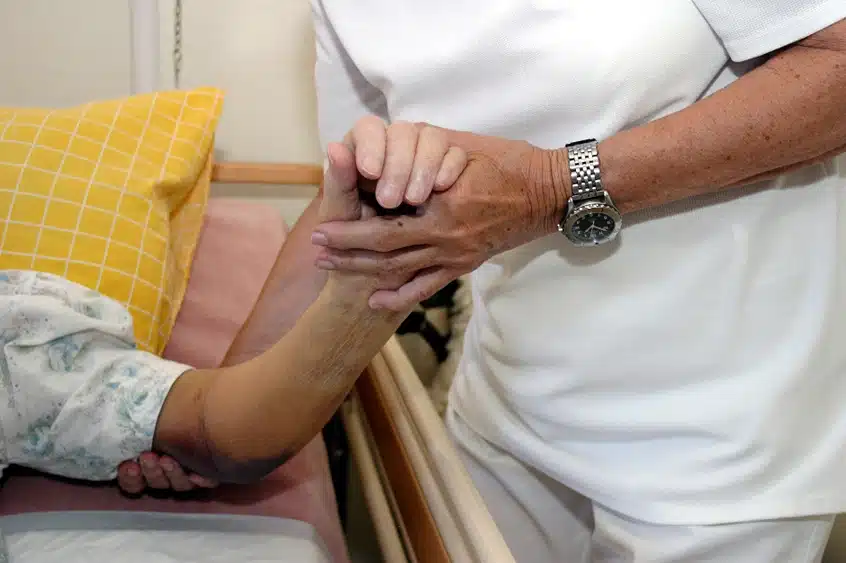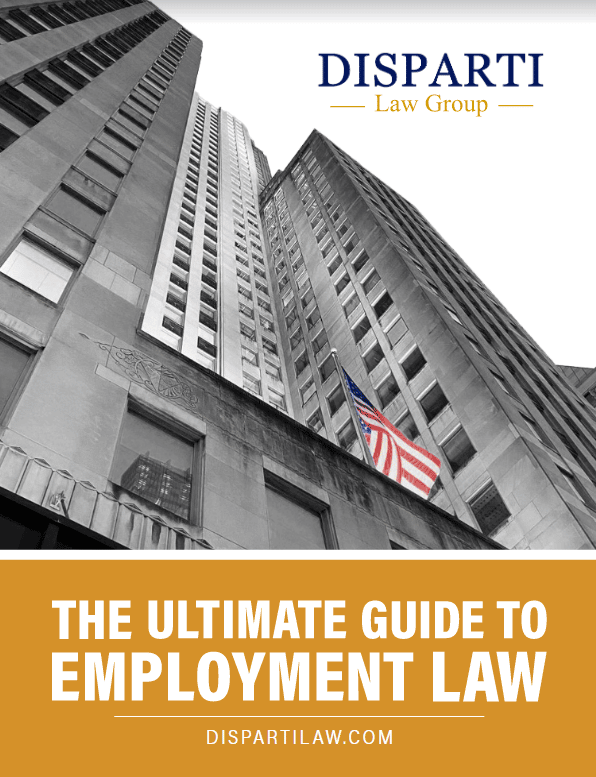 Many people living in nursing homes or long-term care facilities are at an increased risk of suffering a pressure injury such as bedsores. As small of a problem as it may seem, bedsores can cause serious issues to a person’s health, especially those of advanced age. In fact, 26% of patients with bedsores or pressure ulcers live in nursing homes.
Many people living in nursing homes or long-term care facilities are at an increased risk of suffering a pressure injury such as bedsores. As small of a problem as it may seem, bedsores can cause serious issues to a person’s health, especially those of advanced age. In fact, 26% of patients with bedsores or pressure ulcers live in nursing homes.
Knowing the causes of bedsores, how to prevent them, and what precautions nursing homes are expected to take can help keep your loved ones safe from this type of injury.
In This Article:
- What Are Bedsores?
- What Causes Bedsores in Nursing Homes?
- Bedsore Risk Factors
- How to Prevent Bedsores in Nursing Homes
- When Are Bedsores a Sign of Neglect?
- Contact a Nursing Home Lawyer About Bedsores
What Are Bedsores?
Bedsores, also known as pressure ulcers to decubitus ulcers, are painful and potentially dangerous injuries that occur when there is prolonged pressure on the skin and underlying tissues. The excessive pressure disrupts the normal blood flow to the affected skin, depriving it of oxygen and essential nutrients.
These injuries can lead to severe pain, distress, a significant decline in health-related quality of life, and potentially life-threatening complications like gangrene. As a result, the skin begins to deteriorate and break down, eventually forming an ulcer.
Common sites of pressure ulcers include:
- Tailbone or buttocks
- back or sides of the head
- Shoulder blades and spine’
- The hip, lower back, or tailbone
- Backs of arms and legs where they rest against a wheelchair
- The heels, ankles, and skin behind the knees
Several warning signs can indicate the presence of bedsores or pressure ulcers. These include unusual changes in skin color or texture, swelling, drainage resembling pus, variations in skin temperature (feeling cooler or warmer than the surrounding skin), and tenderness in the affected areas. Bedsores are categorized into different stages based on their depth, severity, and specific characteristics. They can range from minor changes in skin color to more severe injuries that involve muscles and even bones.
What Causes Bedsores in Nursing Homes?
Bedsores, or pressure ulcers, are primarily caused by a combination of factors that affect individuals with limited mobility, particularly those confined to prolonged periods of immobility, such as lying in a bed or sitting for extended durations. These ulcers often afflict individuals with underlying health conditions that hinder their ability to move. Conditions like type 2 diabetes, which can impede blood flow in the body, make individuals more susceptible to pressure ulcers.
The development of bedsores is attributed to three main factors:
- Shearing. Where two surfaces, such as a bed and the body, move in opposing directions.
- Constant pressure. Which reduces blood flow in the affected area, leading to tissue damage and eventual tissue death.
- Friction. Occurs when the skin rubs against bedding or clothing—fragile, moist skin is especially susceptible to friction-related injuries.
These factors collectively contribute to the formation of painful and potentially serious bedsores.
Bedsore Risk Factors
Several factors contribute to an individual’s risk of developing bedsores, also known as pressure ulcers. Nursing home staff are expected to know these risk factors and provide additional care for residents who are at a higher risk. Bedsore risk factors include:
Advanced Age. Advanced age is a significant risk factor, with two-thirds of pressure ulcers occurring in individuals aged 70 and older. Elderly individuals are more vulnerable due to their thinner and more fragile skin, mobility challenges, and a higher prevalence of certain health conditions.
Vascular Disease. Vascular diseases, like peripheral artery disease (PAD) and diabetic vascular disease, reduce blood flow, making it easier for tissues to become damaged due to pressure
Immobility. Immobility is another critical risk factor, as it makes changing positions and relieving pressure more difficult, particularly for those bound to wheelchairs or beds. People living with paralysis, such as those with quadriplegia or paraplegia, face an even higher risk of pressure injuries, with prevalence rates of up to 47%.
Incontinence. Incontinence poses a unique risk, as prolonged exposure to stool or urine can make the skin more vulnerable to pressure ulcers.
Obesity. Obesity increases pressure on the skin, tissue, bones, and blood vessels, and it is often accompanied by comorbidities like diabetes and vascular disease, making obese individuals twice as likely to develop pressure ulcers compared to those with a normal weight. Nursing home residents who are obese face up to a 19% higher risk of pressure ulcers compared to their non-obese counterparts.
Loss of Sensation. Loss of sensation, often associated with neurological disorders, spinal cord injuries, and diabetes, increases the risk further, as affected individuals may not feel discomfort or pain, making it challenging to recognize the need to change positions
Dehydration and malnutrition. Dehydration and malnutrition are also risk factors, as adequate hydration and nutrition are essential for maintaining skin health and preventing tissue breakdown.
How to Prevent Bedsores in Nursing Homes
Not all bedsores are preventable for more vulnerable residents. But bedsore prevention should be a top priority in nursing homes and each resident should be carefully monitored to ensure their safety. Staff should take the first following precautions to prevent bedsores in nursing homes.
Changing position
Frequently altering the resident’s body’s position is a highly effective strategy for preventing pressure ulcers. In cases where a pressure ulcer has already formed, consistent position changes can help alleviate additional pressure on the wound, optimizing the conditions for healing.
As a general guideline, individuals using wheelchairs should aim to adjust their position every 15 to 30 minutes to reduce the risk of pressure ulcers. For those who are bedridden, changing their position at least once every 2 hours is essential to minimize the likelihood of developing these painful skin injuries.
Nutrition
Ensuring that residents are eating a balanced diet that contains appropriate amounts of vitamins, minerals, and protein can help prevent skin damage from the inside out. It can also help facilitate the healing process if a bedsore has already formed.
Perform Skin Assessments
Nursing homes must regularly check residents who are at high risk for bedsores and do a thorough assessment of vulnerable areas. If you are visiting a loved one in a long-term care facility you can check their skin as well. Take note of any red or purple areas that might have been there last time and haven’t healed or look new to you. If bedsores are caught early enough, they can easily heal in a few days with treatment. When left untreated, pressure ulcers can pose a serious threat to a person’s health.
Use of Proper Mattress
Using proper equipment such as a good mattress can go a long way in preventing bedsores in nursing homes. Using static air mattresses or overlays may be better than foam mattresses for preventing pressure ulcers. An elevated bed for residents who require one should be no more than 30 degrees to reduce shearing caused by sliding down the bed.
When Are Bedsores a Sign of Neglect?
Sometimes, bedsores can be a sign of neglect in nursing homes. The Nursing Home Care Act upholds residents’ rights to receive courteous and respectful treatment, as well as the provision of basic human needs, including water, food, medication, toileting, and personal hygiene, promptly. When proper treatment is not administered or is inadequately performed it can lead to the development or exacerbation of pressure ulcers.
Moreover, any breach in the skin integrity caused by pressure, regardless of the origin, carries the risk of infection, including localized infections, cellulitis, and osteomyelitis, which can ultimately lead to sepsis. Failure to meet these fundamental care standards may signify nursing home neglect and raise concerns regarding the overall quality of care provided to residents.
Contact a Nursing Home Lawyer About Bedsores
If you notice any warning signs of bedsores on your loved one who is in a nursing home be sure to speak up right away. They deserve the best care and while it may seem like a small problem, this type of injury can cause serious health issues and even sepsis leading to death. If you feel that your loved one has experienced nursing home abuse or neglect that has caused bedsores or has interfered with their treatment, it may be time to speak with an experienced attorney about your rights.
At Disparti Law Group Accident & Injury Lawyers, we fight for nursing home residents and their loved ones to ensure that they receive the best care possible. Our nursing home abuse attorneys have the skills and expertise to hold negligent facilities accountable and to fight for the compensation you deserve for the harm they caused.
For a FREE case consultation, call (312) and 600-6000 today. Find out why so many say… Larry Wins!









